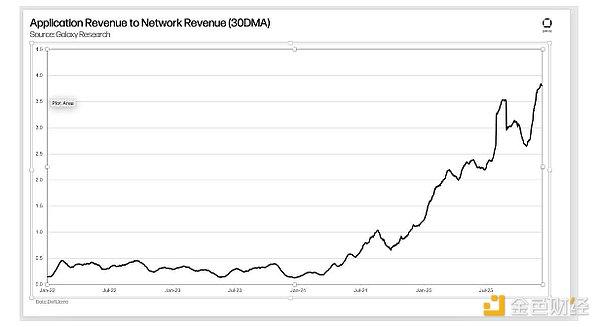Original | Odaily Planet Daily(@OdailyChina)
Author|Azuma(@azuma_eth)

In July this year, the U.S. Securities and Exchange Commission (SEC) officially approved the trading application for the ETH spot ETF, making ETH the second cryptocurrency after BTC to be listed on the traditional financial trading market in the form of an ETF.
However, four months have passed, and the traditional financial market has not shown the same enthusiasm for ETH as it has for BTC. The main reason is that the narrative of ETH as a technology-driven product is less appealing to the traditional market compared to BTC's "digital gold" narrative; secondly, the continuous selling pressure from Grayscale ETHE and the SEC's restriction on the staking function of the ETH spot ETF have also objectively weakened its attractiveness.
For investors in the ETH spot ETF, currently holding ETH through the ETF means missing out on staking rewards (currently around 3.5%), and they also need to pay management fees of 0.15% to 2.5% to the ETF issuer. While some investors may not mind forgoing this income for the sake of convenience and security, there are certainly some investors who will turn to other alternative solutions or even postpone their investment inclination because of this.With the election of Trump, this situation is now seeing a turning point. The market expects the cryptocurrency regulatory environment to improve effectively, and the ETH spot ETF is also expected to introduce staking functions, thereby amplifying the attractiveness of this investment product and helping to boost the strength of ETH.
On November 13, ETF issuer Bitwise announced that it has acquired the ETH staking service provider Attestant. Bitwise CEO Hunter Horsley said in an interview that currently one-fifth of Bitwise's clients want to earn rewards through staking, but a few years from now, most clients may have this demand.
On November 20, European cryptocurrency ETP issuer 21 Shares AG announced that it has added staking functionality to its core ETH ETP product, which has been renamed "ETH Core Staking ETP" (ETHC), and the product is currently listed and traded on the Swiss Stock Exchange, the German Xetra Exchange, and the Euronext Amsterdam Exchange.
On November 22, Gary Gensler, the SEC chairman who is seen as opposing cryptocurrency regulation, announced that he will step down on January 20, 2025, further increasing the probability of the ETH spot ETF introducing staking functions.
Which cryptocurrencies will benefit?
First, the introduction of staking functions to the ETH spot ETF will directly benefit ETH - this will directly amplify the investment attractiveness of the ETH spot ETF, and this may also be one of the reasons for the relatively strong performance of ETH recently.
In addition, this change will also indirectly benefit the staking sector and the higher-level re-staking sector.
In the staking sector, Lido (LDO), Rocket Pool (RPL), Ankr (ANKR), and Frax (FXS) have all gone through a prolonged consolidation period and have shown some signs of recovery.

LDO and RPL in particular need to be highlighted. In June this year, the SEC sued Lido and Rocket Pool, claiming that the stETH and rETH issued by the two platforms constituted securities, which had caused a short-term plunge in LDO and RPL at the time. It is expected that with Gensler's departure, this lawsuit will be resolved in a more amicable manner.
In the re-staking sector, EigenLayer (EIGEN) has shown a remarkably strong rebound after hitting an all-time low last week, temporarily holding the key $3 level even as BTC has seen a significant pullback. As the leading protocol in this sector, the subsequent performance of EIGEN is expected to have a significant impact on the future performance of projects like ether.fi (ETHFI), Renzo (REZ), and Puffer (PUFFER) in the ecosystem.

In addition to these cryptocurrencies, other companies providing staking services are also likely to attract more business from the opportunity to introduce staking functions to the ETH spot ETF, such as Coinbase (COIN), which is already listed on the U.S. stock market. As a major custodian for both the BTC spot ETF and the ETH spot ETF, Coinbase also issues the liquidity derivative token cbETH, and while there is no definite news yet, it can be expected that some ETF service providers will tend to continue to choose Coinbase's services.
Limited business relevance, sentiment-driven dominance
Looking at the recent market performance, ETH, the staking sector's LDO and RPL, and the re-staking sector's EIGEN and ETHFI have all achieved relatively good rebounds.
However, even if the ETH spot ETF is confirmed to be able to introduce staking functions, this business may still be difficult to flow into native crypto-world liquidity staking tokens (LST) or liquidity re-staking tokens (LRT) such as stETH, rETH, and eETH. ETF issuers may either acquire staking service providers like Bitwise, or directly choose platforms with better reputation like Coinbase as mentioned earlier.
Therefore, at the end of the day, the rapid rebound in the staking and re-staking sectors is still mainly driven by market sentiment in the short term, and the actual business opportunities may be relatively limited... But then again, the most precious thing in a bull market is sentiment, and this is not a bad thing for the long-dormant Ethereum ecosystem.







